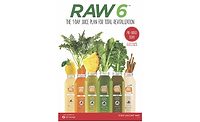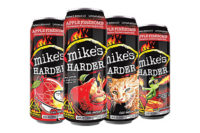In the 1959 film “Some Like It Hot,” the comedic stylings of Tony Curtis and Jack Lemmon offer an entertaining twist about two musicians who witness the Saint Valentine’s Day Massacre and dress in drag to avoid mafia gangsters. Although not as comical, beverage trends suggest that consumers also like it hot when it comes to their alcohol and non-alcohol drink choices.
“Overall, consumers have an increased desire for bold flavors, twists on traditional items, spicy ethnic foods, items that provide sweet heat and flavors so hot they make you sweat or cry,” says Kari Manze, marketing manager for FONA International Inc., Geneva, Ill. “Consumers are becoming more adventurous and seeking out new tastes including a curiosity for spicier flavors.”
Manze adds that as consumers become familiar with ethnic foods from restaurant menus, cooking shows, international travel or just plain curiosity, hot and spicy options become more popular.
Judson McLester, executive chef and ingredients sales manager for Avery Island, La.-based McIlhenny Co., which markets Tabasco brand products, explains that consumers have become more educated about the hot and spicy ingredients found in the various foods that they consume. With this familiarity, these ingredients are moving toward the beverage market.
“The fact that hot and spicy flavors are already at the tip of everyone’s tongue, it makes sense that they migrate over to beverages,” he says. “Some of those trends are savory and spicy, sweet and spicy, and authentic spicy, amongst a few.”
Spiced right
As beverage-makers look to develop spicy drink options, they have numerous ingredients from which to choose.
“Popular hot and spicy ingredients/flavors that are being used in beverages include an abundance of chili peppers including the most familiar chipotle pepper and jalapeño peppers,” FONA’s Manze says. “Other chili peppers such as cayenne, habañero, piquin and arbol are starting to appear as well. Wasabi, Thai chili and curry are additional spicy flavors adding heat to beverage applications.”
Beyond these, McIlhenny’s McLester says that fresh ginger and Joloki also are being used in beverage formulations. He notes that just about anything fresh and different is appealing to mixologists because “it’s about experimentation” when developing hot and spicy drinks.
But when experimenting with these ingredients, it’s not just about knowing what spicy ingredients beverage-makers want to work with. It’s also about knowing what other ingredients they can work with. “I would say the sky is the limit here: fruit juices/concentrates, flavored simple syrups, maple, chocolate, caramel and vegetables,” McLester says. “Dairy items like yogurt, milk, cream often pair well with heat since they contain some fat to coat your palate.”
FONA’s Manze says that citrus flavors such as lemon, lime, grapefruit and orange also can complement hot and spicy ingredients. “Some flavor pairing examples include lemon cayenne, jalapeño lime, orange chili, mango chili and grapefruit cayenne,” she notes.
The formats in which beverage-makers can develop these new product formulations also have a wide base. “Most often they are used in cocktails, but you can use them in smoothies, protein drinks, hand-crafted beer and sodas, and even various fruit and vegetable juice concoctions,” McIlhenny’s McLester says. “I’ve even made iced tea and coffee using Tabasco brand Chipotle Pepper Sauce and beer with Tabasco brand Original Red Sauce.”
FONA’s Manze notes that within alcohol products, spicy flavors remain popular in beer, vodka, whiskey and rum. For non-alcohol products, the popular categories are coffee, teas, cocoas and juices. However, in the juice category, spices are more commonly used in cleanses, nectars and high pressure processing juice beverages, she explains.
Formulation that works
Although understanding the properties of any ingredient is vital, ingredient suppliers note that hot and spicy ingredients can have variations, even across the same ingredient. Because of this, it is important that beverage-makers work with their suppliers to ensure a consistent batch-to-batch product.
“When using fresh ingredients, Mother Nature has a way of creating individuality, meaning not all peppers contain the same [Scoville Heat Units] (SHU) or flavor even amongst the same spices,” McIlhenny’s McLester says. “That’s where Tabasco comes in. We offer consistency in both flavor and SHU, which allows for the perfect beverage.”
FONA’s Manze also notes that within ready-to-drink (RTD) beverages, flavor intensity can change over the shelf life of a product. “At times with RTD beverages, as the spices sit or marry into the base, the intensity of the heat will build, either due to time or processing, which may result in a different level of spiciness,” she says.
Actual spices also can exhibit separation or sedimentation, which could cause variation to the ingredients, Manze explains. Flavors can offer a more consistent profile, she adds.
As beverage-makers learn more about how best to work with hot and spicy ingredients, it is likely more products featuring these ingredients and flavors will enter the market. “I believe that we will continue to see companies push the envelope when it comes to heat,” McIlhenny’s McLester says. “Just how much are they willing to go is the question. The more we consume food and beverages containing heat we will build tolerance, which will drive more consumption.”




